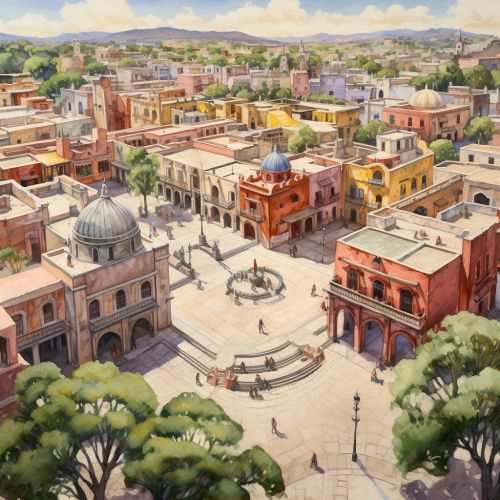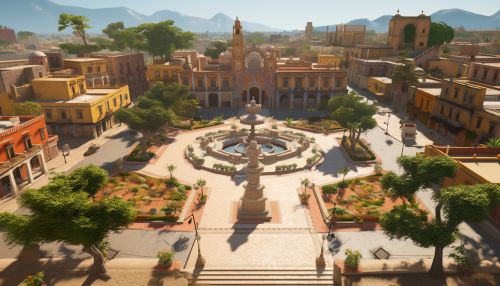Tlatelolco
History
Tlatelolco is an area now within the Cuauhtémoc borough of Mexico City, centered on the Plaza de las Tres Culturas. Its historical significance lies in its being the site of the largest market in the Aztec empire, the location of the last Aztec emperor's surrender to Hernán Cortés, and the scene of the Tlatelolco massacre in 1968.


The name Tlatelolco comes from the Nahuatl language, meaning "In the mound of sand". It was one of the main altepetl (city-states) of the Valley of Mexico, along with its sister city, Tenochtitlan. The two cities were located on separate islands in Lake Texcoco, connected by a causeway.
Pre-Columbian Era
Tlatelolco was founded in the 14th century by a group of Nahua people, who broke away from the ruling powers in Tenochtitlan. The city was renowned for its market, which was said to be the largest in Mesoamerica. The market was a hub of economic activity, attracting traders from far and wide. It was described in great detail by Spanish conquistadors, who were astounded by its size and the variety of goods available.
The city was also known for its educational institution, the Calmecac. This was a school for the nobility, where students were taught religious doctrines, astronomy, calendrics, and the art of governing. The Calmecac of Tlatelolco was renowned throughout the region, and many nobles sent their children there for their education.
Spanish Conquest
During the Spanish conquest of the Aztec Empire, Tlatelolco became the last stronghold of the Aztecs. The city was besieged by the Spanish and their indigenous allies in 1521. After a prolonged siege, the last Aztec emperor, Cuauhtémoc, surrendered to Hernán Cortés in Tlatelolco on August 13, 1521. This marked the end of the Aztec Empire and the beginning of Spanish rule in Mexico.
Colonial Period
Following the conquest, the Spanish razed Tlatelolco and built a church, the Templo de Santiago, on the site of the former Aztec temple. The church was built using stones from the destroyed temple, a common practice during the colonial period. The church still stands today and is a popular tourist attraction.
During the colonial period, Tlatelolco was largely a residential area. The market was moved to a new location, and the area's significance declined. However, the church and the ruins of the Aztec temple attracted visitors and pilgrims, keeping the area alive.
Modern Era
In the 20th century, Tlatelolco became the site of a large housing project, the Unidad Habitacional Nonoalco-Tlatelolco. This complex was built in the 1960s and was one of the largest housing projects in Mexico at the time. It was designed by the architect Mario Pani and is considered a significant example of modernist architecture in Mexico.
Tlatelolco gained international attention in 1968 when it was the site of a student protest that ended in the Tlatelolco massacre. The government's violent response to the protest resulted in the deaths of hundreds of people and marked a turning point in Mexico's political history.
Today, Tlatelolco is a bustling area of Mexico City, known for its historical sites, its market, and its role in Mexican history.
